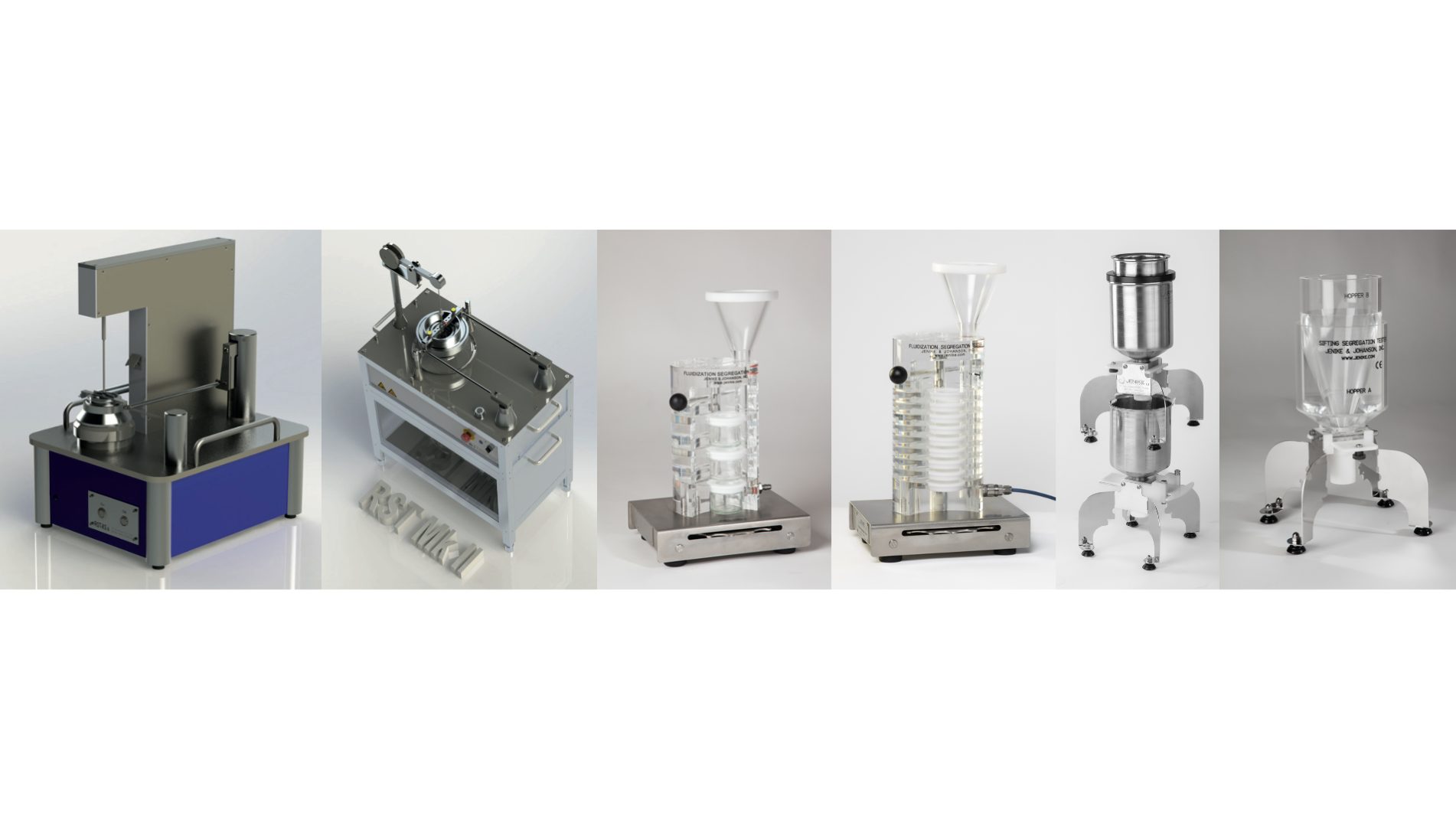Ring Shear Tester
ASTM International Standard D6773
The Ring Shear Tester provides computer-controlled measurement of the flow properties of powders and other bulk materials under representative operating conditions. Important properties measured include cohesive strength, internal friction (particle-to-particle), wall friction (particle-to-wall), and compressibility (bulk density as a function of pressure).
Flow properties test results are useful for:
- Product development and characterization
- Quality control
- Troubleshooting of flow or processing problems
- Determination of critical hopper design parameters needed to achieve mass flow and avoid bridging
Why Choose the Ring Shear Tester?
- It is a real shear tester, which is the only internationally recognized, commercially available tester to measure the flow properties of bulk solids.
- Tester is easy to use, requiring minimal operator training and skill
- Tester is extremely versatile, and can test materials which are free-flowing, very poor flowing, require large shear deformation, have large particles
- Tester can be used to measure the attrition (friability) properties of granules, flakes, and pellets
What Size Ring Shear Tester Do You Need?
The “small” Ring Shear Tester, model RST-XS.s, utilizes a 30 ml cell volume. This compares to the 900 ml cell volume of the standard tester, model RST-Mk-II. The small sample size makes the RST-XS.s especially appropriate for the pharmaceutical industry, where large sample quantities can be difficult and/or expensive to produce. The small size of the RST-XS.s also makes it a bench-top unit, while the RST-Mk-II is a floor unit.
Download a PDF with further details for the ring shear testers, model RST-XS.s or model RST-Mk-II. Contact us to discuss your material testing questions and our specialized engineering services available to solve or prevent costly bulk material handling problems.
Sifting Segregation Tester
ASTM International Standard D6940
The Jenike & Johanson sifting segregation tester measures the tendency of powders or other bulk solids to segregate by the sifting mechanism. Sifting, which is a process by which smaller particles move through a matrix of larger ones is the most common method of segregation. This mechanism is most likely to occur when handling particles with different particle size and when there is inter-particle motion, such as during filling, transfer, etc.
The sifting segregation tester:
- Simulates the side-to-side segregation effects of a free-flowing material discharging from a hopper
- Provides a trend through a fill/discharge cycle
- Allows comparison of one material to another
- Allows multiple fill/discharge cycles
- Provides both mass flow and funnel flow discharge patterns
Choose between a stainless steel or acrylic tester, depending on your material’s surface compatibility. Download a PDF with further details for the stainless steel or acrylic sifting segregation tester or contact us to discuss your segregation test questions or our specialized engineering services available to solve or prevent costly segregation or product quality problems.
Fluidization Segregation Tester
ASTM International Standard D6941 & US Patent 6,487,921 B1
The Jenike & Johanson fluidization segregation tester measures the tendency of powders or other bulk solids to segregate by the fluidization mechanism. Fluidization can cause vertical segregation, i.e., horizontal layers of fines and coarse. Fine particles generally have a lower permeability than coarse particles and therefore tend to retain air longer. Thus on filling a hopper, the coarse particles are driven into the bed while the fine particles remain fluidized near the top surface. This can also occur after tumble blending if the material is fluidized during blending. Air entrainment often develops in materials that contain a significant percentage of particles below 100 microns in size. Fluidization segregation is likely to occur when fine materials are pneumatically conveyed, filled or discharged at high rates, or if gas counter-flow is present.
The fluidization segregation tester:
- Simulates the top-to-bottom segregation effects of gas flow through a bulk material, e.g., upon filling a bin, rapid blending, or pneumatic conveying
- Allows comparison of one material to another
- Provides computer controlled gas flow rate for repeatable, operator independent testing
Choose between a 3-cell or 9-cell tester, depending on the level of gradation desired. Download a PDF with further details for the 3-cell or 9-cell fluidization segregation tester or contact us to discuss your segregation test questions or our specialized engineering services available to solve or prevent costly segregation or product quality problems.



